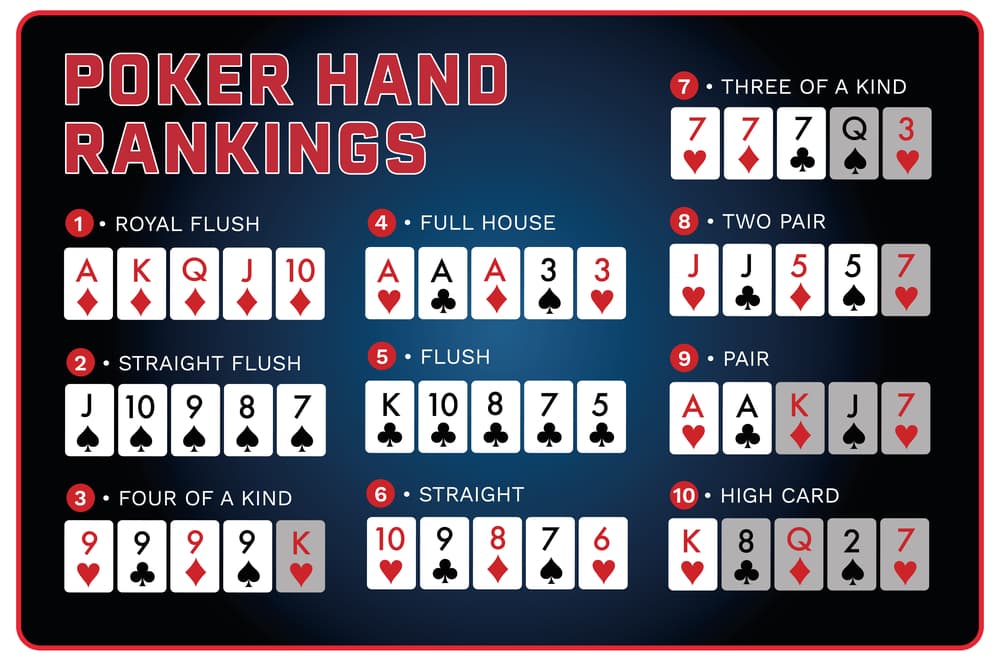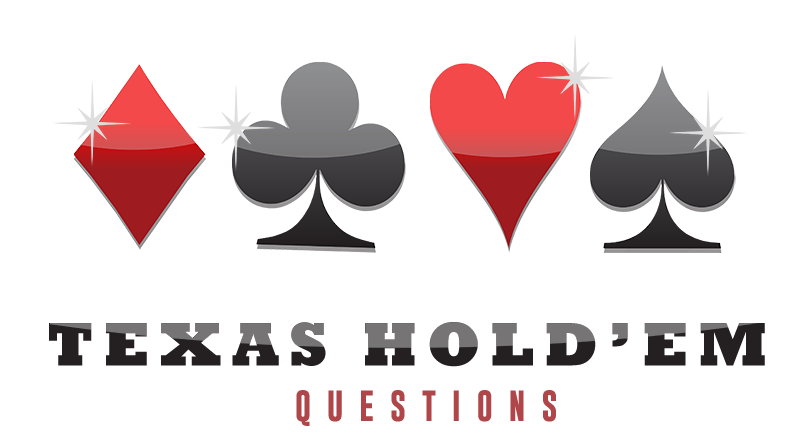A poker cheat sheet is a guide to help you learn the fundamentals to play solid poker in order to beat micro and low stake games. Like any endeavor, it takes time, experience and regular evaluation to become a master. The idea behind my cheat sheet is that you can refer to it easily to help you make better decisions early in your poker career.
There are cheat sheets for pretty much every form of gambling e.g. Blackjack. This is not real ‘cheating’. Cheating the casino is not allowed and can get you into trouble so you won’t find any of those in this guide. The term “cheat sheet” is just another word for “guide” or “tips”.
This page will detail everything you need for Texas Hold’em; hand rankings, basic odds, the types of hands to raise, call and re-raise with, post-flop poker tips and some advice on tools you can use.
If you are in a hurry you can download our free poker cheat sheet instantly below or at the bottom of this article if you continue reading. Otherwise, read on to learn the basics of Texas Hold’em.
Poker Hand Rankings
If you are new to poker, you will need to understand the proper hand rankings. The chart below should help you understand the respective hand rankings in poker. It’s worth noting that the top hand below is very rare. A professional poker player can count on one hand the number of times they have made a royal flush.

Calculating Outs as Odds
To make better decisions, you will want to know the chances of improving your hand and reconciling that with the amount your opponent is betting. The table below should help you see, at a glance, the approximate percentage of you making your hand for the most common scenarios you will find yourself in. After a while, calculating your outs and converting them to odds will become intuitive. In the meantime, feel free to refer to this table:
| Draw Type | Number of Outs | Turn & River (2 Cards) | River (One Card) |
| Flush & 2 Overcards | 15 | 54% | 33% |
| Flush & 1 Overcard | 14 | 51% | 30% |
| Open End Straight & 1 Overcard | 11 | 42% | 24% |
| Flush | 9 | 35% | 19% |
| Open End Straight | 8 | 32% | 17% |
| Set to Full House or Quads | 7 | 28% | 15% |
| 2 Overcards | 6 | 24% | 13% |
| Gutshot Straight | 4 | 17% | 9% |
| Backdoor Flush or Straight | 1 | 4% | 2% |
Hand Selection: What hands should you raise with?
Choosing which hands to play is very important. It’s the first key decision of any poker hand when you are starting out in poker. The most important thing is to play a selective hand range based on the position you are in. As you lack the post flop skills to profitably make marginal pre flop calls, you will need to be careful about the hands you play. Below is a guide to hands you can open raise with, if you are first to enter the pot i.e. nobody has raised in front of you. Please note that the illustrations assumes you are opening the hand ranges in the earlier positions too e.g. You open KJ suited in early position therefore you are opening it in mid position too.
Early Position
The earliest positions is where you need to play the smallest range of hands. With more opponents to act behind you and increased chance of being out of position post-flop, you will want to play stronger candidates of hands. We recommend sticking with pairs 5 and above, ace ten suited to ace king suited, off suit versions of ace queen and ace king and suited paint like king jack. As you develop you will be able to include a wider range but initially, stick with these.
- Any pocket pair 5 or higher (5-5,6-6,7-7,8-8,9-9,10-10, J-J, Q-Q,K-K, A-A)
- Ace Ten Suited to Ace King Suited (A-10s-A-Js,-A-Qs,A-Ks)
- Ace Queen and Ace King offsuit
- Suited paint cards (Q-Js,K-Js,K-Qs)
Middle Position
With the first few opponents folding, a beginner can start to incorporate a few more hands into their raising range. In addition to opening the same hands from early position, we recommend also raising with unsuited paint cards like queen jack, all suited aces, the smaller pocket pairs and any suited connectors that are higher than a six and sequential e.g. seven eight of spades.
- Offsuit paint card combinations (K-Qos, K-Jos,Q-Jos)
- Suited aces (an ace with another card of the same suit)
- All pocket pairs including 2-2,3-3 and 4-4
- Any suited connectors above a 6 e.g. 6-7s,7-8s, 9-10s
Late Position
With most of the table folding and an increased chance of winning with a raise or playing the pot in position, you can include far more hands in your raising range. From the cut-off and button, we recommend opening all the hands mentioned, plus any ace, suited kings, off-suit connectors, gapped connectors and any suited cards that have a gap of 3 at worst e.g. J-8 suited.
- Any ace e.g. A-2os, A-3os etc
- Suited kings (a king with any card of same suit)
- Offsuit connectors e.g. 7-8os, 10-9os etc
- Gapped connectors 2 apart e.g. Q-9os, 9-7os
Please note we have not assigned a hand range to open raise from the small blind with. We believe this is the worst spot to open raise in Texas Hold’em from and don’t think it would be wise to advise a wide opening raise range from here. Instead, play very careful from the small blind, potentially only raising hands you’d play from middle position. Look to minimize how much you lose and let the strong hands do their “talking” so to speak.
Hand Selection: What hands should you call raises with?
It’s important to recognise you won’t have the pre-flop aggression in the hand when calling a raise. Therefore you should be calling raises with hands that are at least as equal in value to the likely range your opponent is raising with, and preferably with position on them.
There is no trick to knowing what hands you should call player A’s raise with. Instead, think about the type of player raising and act accordingly. Consider their table image. In other words, if it is a loose player opening, you can widen the hands you call with as he is opening wider than a tight player. If it is a tight player opening, you should be looking to play less hands or hands that can break him and his premium hands e.g. low pairs.
As a very basic guide consider calling raises with the hands below.

Hand Selection: What hands should you re-raise (3bet) with?
Starting out, we recommend 3 betting with ace-king suited, Pocket Queens, Kings and Aces. As you develop and gain experience you will certainly be re raising with other hands but this printable poker cheat sheet is purely for the new player playing micro/low stakes poker.
Tips for playing after the flop
You will quickly learn that whilst the flop is straight forward, playing the turn and river is complex. As you are playing a selective hand range to begin with though, you will not be facing as many difficult situations as a more experienced player. Check out some tips to follow below.
Miss the Flop? Get out of the way
Beginners make the mistake of going too far and investing too much in a hand that hasn’t any value. If you get to the flop and haven’t a pair or draw, it’s best to get out the way and let other’s contest the pot.
Be wary of straights and flushes if betting gets large
When the your opponents are betting large or re-raising you and the board is heavily co-ordinated with potential straights and flushes, you need to be careful. A super tight player (aka nit) is unlikely to be playing fast with a one pair hand in this scenario.
Avoid betting 50% or more of the pot
When start out at poker, there’s no need to be trying advanced over-bets. Instead, keep your sizing on the slightly smaller size. You will often find a bet of around 1/2 of the pot will accomplish many of the things you are trying to achieve. It is also sizeable enough that it will command respect from your opponents. Conversely, min bets and bets great than the size of the pot will accomplish little and give others the impression you are clueless.
Don’t attempt crazy bluff bets in multi-way pots
Anytime there are more than two people involved in a pot is a tricky situation. The more people involved, the greater chance someone has a strong hand. Therefore, you should limit your big bluffs if you’re in a pot with several opponents.
There is no need to slowplay at micro-stakes
Trappy slowplay poker is not necessary in the micro stakes games. People are more inclined to call you down so there is much less need for deception. Rarely will slowplaying a hand get you more value than just betting it outright.
Bet top pair or better hands
Top pair or better is often going to be the best hand so don’t be afraid to bet it out. By doing this you will get value, protect the best hand and also find out information from your opponent when they react.
Don’t get too attached to ace king if you miss
One of the biggest mistakes rookies make is playing ace king too aggressively after the flop. Remember, if you miss the flop, it’s just ace high, and a meagre pair of deuces beat you.

Playing live or on a device
Never has poker become so fun and diverse it can be played anywhere from the local casino to your handheld device or even your desktop. You have many options on how you want to deposit and play. But how do you find the right casino? Well, visit Minimumdepositcasinos.org and check out their top list. You can start playing with as little as $1 casino deposit. So just sit back and enjoy a hand of poker from the comfort of your home.
Tools for finding the best sites
A cheat sheet wouldn’t be the same without offering advice on available tools online. There are some great resources and comparison sites that let you know the best casino and poker sites around. These websites will give you the relevant information on bonuses, tournament schedules, payment options and customer support features. These are all necessary components to a trusted site and something you should look out for. The best sites are the softest sites as they will have new and weak opponents on them. If you play on these sites and use this cheat sheet, you will have the advantage on them.
Summary
This Texas Hold’em cheat sheet is aimed at the new player coming to poker who has little experience but wants to learn quickly. Understanding hand rankings, what hands to play and the basic odds are the basic fundamental skills required to be a competent player, capable of winning at micro stakes. There is so much more strategy and complexity to Texas Hold’em that can take years to master but we hope this cheat sheet will help you at the start of your poker journey. This sheet is designed to help poker players but there are other sites offering recreational gamblers a complete guide to finding a new casino in 2024.
Relevant Articles:
- How to make money playing poker
- Poker Tournament Strategy
- 6 Max Poker Guide
- Texas Hold’em Strategy ( 8 Tips)
Download Texas Hold’em Cheat Sheet
You can download our poker cheat sheet below for free.
This guide was originally published in 2020 and has been updated.



